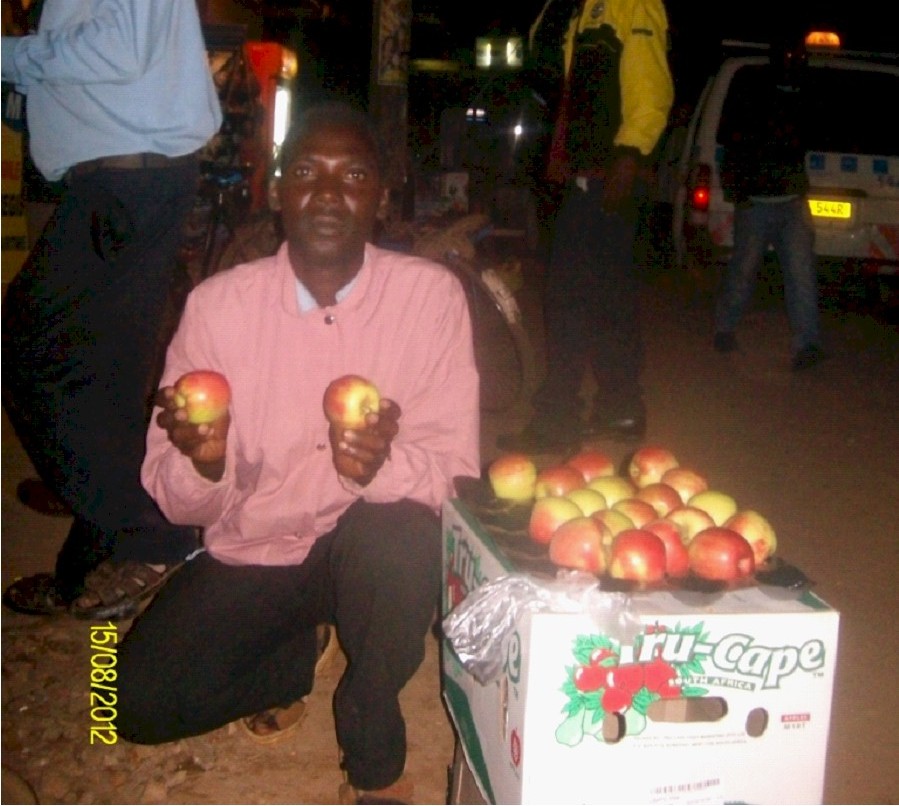| Concerning Anna and Dorsett Golden Apples |
|
Anna and Dorsett Golden are two of the tropic world's most favorite apple varieties, and for good reason. They grow quickly and often fruit the second year. They are reliable croppers, and the quality is acceptable; both are sweet, crisp, and juicy, and Anna makes excellent pies. They are considered some of the easiest apples to grow in the tropics and thus are planted exclusively by countries that are just starting out in apple culture. Farmers will also want to plant their entire fields with them and will place orders for thousands of trees of Anna and Dorsett Golden. |
|
However, I believe this is a mistake. Although there are many things to like about Anna and Dorsett, there are some shortcomings also; they bruise easily and do not keep long, especially without refrigeration. They ripen over a short period, leaving the farmer with nothing the rest of the year. The flavor is good but does not have the complexity of many commercial apples. |
 |
The Uganda Daily Monitor featured an article in January of 2013 detailing how the locally-grown apples do not sell as well as the imported commercial varieties. Apples have been grown in the Kabale region of Uganda for years, but the grow almost exclusively Anna and a few Dorsett Golden. Customers have complained that they have a funny taste (Anna can be astringent the first few years), they are not as attractive as the imports, and they spoil very fast. It may be because the farmers are using Anna and Dorsett Golden for the wrong purpose; they will not compete with imported apples in the fresh market, but may be just as good or better for the processed market such as dehydrated apples. In this case both the appearance and storage ability do not matter. |
|
This article demonstrates that as a countries' tastes in apples becomes more sophisticated, it will be necessary to produce a top-quality product if it is to compete against imported apples. What needs to happen is for apple varieties to be identified that excel in a certain location's climate and soil type, ones that when well-grown will create great demand because they cannot be grown elsewhere. Planting multiple varieties that have their ripening period spread out over four or five months will allow a more constant flow of fresh apples to the market place, and also minimize the risk of pests, disease or weather wiping out the entire crop. An additional article in In2 East Africa summarizes who hotels and supermarkets in Tanzania are forced to spend a lot of money to import fruits and vegetables, because those produced domestically are of poor quality. One of the exceptions they note are the apples grown in in Iringa Region that are comparable to the ones imported from South Africa. Because of this I do not recommend planting more than 20% of your fields with Anna and Dorsett Golden. The rest should be planted with at least 10 different varieties that may take longer to come into bearing, but will be much more profitable in the long run. Early testing results indicate that Fuji may become the dominant locally-grown apple because if its excellent quality and reliability, even though it takes five years to really start producing. Highly-colored apples like Red Rebel, King David, Dixie Red Delight, and Empire also will compete better. Every location is different and it is only though testing that you will find the apple varieties that excel in your area. Any one of the varieties we carry has the potential of becoming that "winner", as we don't have room in our orchard for losers. |
|
©2015 Kuffel Creek |